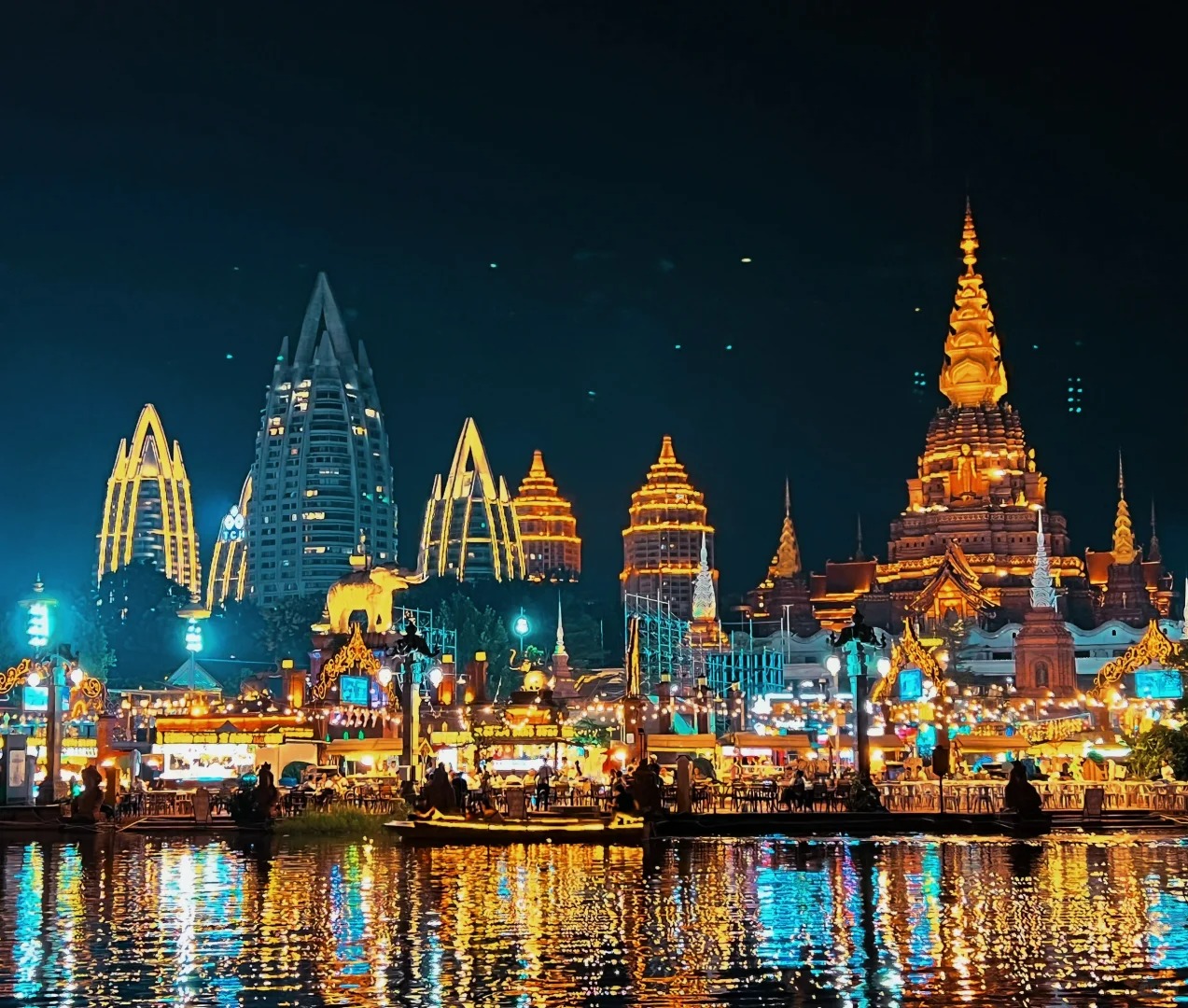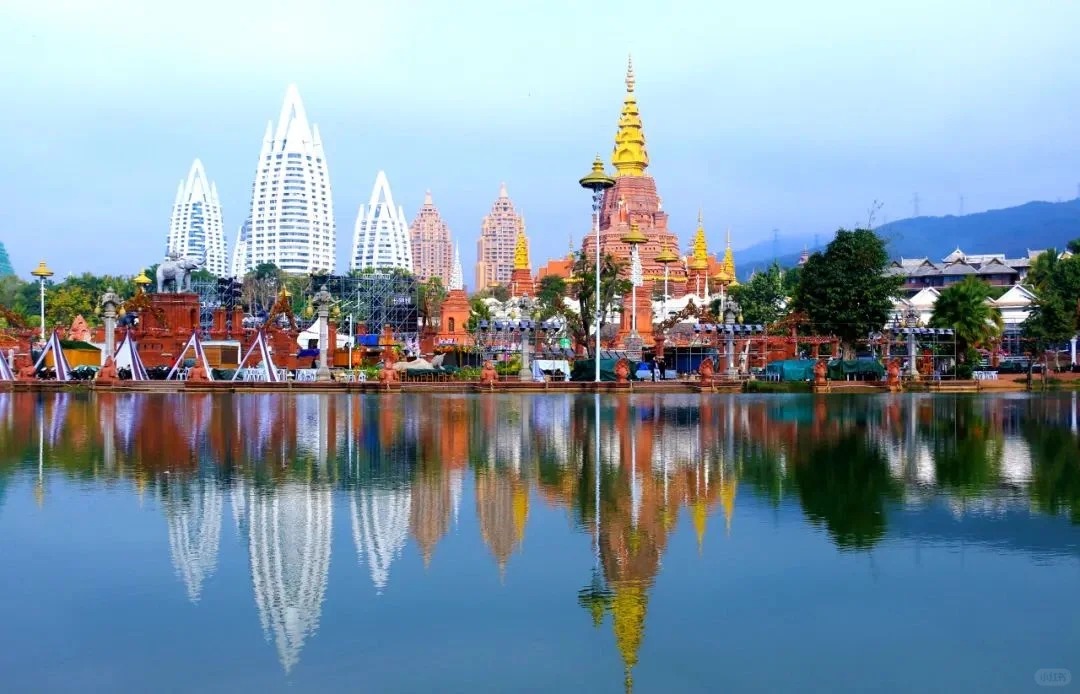Visiting Information
| Information | Details |
|---|---|
| Chinese Name | 西双版纳 (Xīshuāngbǎnnà) |
| Location and Address | Xishuangbanna Dai Autonomous Prefecture, Yunnan Province, China |
| Opening Time/Hours | Open year-round; specific attractions may have varying hours |
| Entrance Fee | Varies by specific attraction or park |
| How to Get There | By Air: Fly to Xishuangbanna Gasa Airport By Bus: Long-distance buses from major Yunnan cities By Taxi: Available within Jinghong city and for short trips |
| Best Time for Visit | November to April (dry season) for comfortable weather |
| Contact Info | Xishuangbanna Tourism Bureau: +86 691 2122111 |
Overview
Xishuangbanna is a tropical paradise located in the southernmost part of Yunnan Province, China. Known for its lush rainforests, diverse ethnic cultures, and unique biodiversity, it offers visitors a blend of natural beauty and rich cultural experiences. The region is home to the Dai people and numerous other ethnic minorities, each contributing to the area’s colorful tapestry of traditions and customs.
Historical Background
Xishuangbanna has a history dating back over 1,000 years. It was once part of the ancient kingdom of Nanzhao and later the Dali Kingdom. The region has long been an important crossroads for trade and cultural exchange between China and Southeast Asian countries. Its unique location and diverse ethnic composition have shaped its distinct cultural identity, blending influences from both Chinese and Southeast Asian traditions.

Architectural Features
- Dai-style Buddhist Temples: These ornate structures feature multi-tiered roofs with upward-curving eaves, intricate carvings, and colorful murals. The most famous is Wat Xiengthong in Jinghong, showcasing traditional Dai architectural elements and religious artistry.
- Ganlanba (Stilt Houses): Traditional Dai houses built on stilts to protect from floods and animals. These unique dwellings are typically constructed from bamboo and wood, with the living quarters elevated above the ground.
- Mengle Temple: A large Buddhist complex that combines elements of Dai and Han Chinese architecture. It features a nine-story pagoda, ornate gates, and various halls dedicated to Buddhist worship and cultural preservation.
Cultural Importance
Xishuangbanna is a melting pot of cultures, home to more than 13 ethnic minorities, with the Dai people being the largest group. The region is crucial for preserving and showcasing the unique traditions, languages, and customs of these ethnic groups. Cultural festivals like the Dai Water Splashing Festival attract visitors from all over the world, promoting cultural exchange and understanding. The area’s traditional agricultural practices, particularly tea cultivation, have also played a significant role in shaping local culture and economy.
Surrounding Attractions
- Xishuangbanna Tropical Botanical Garden: One of the largest tropical botanical gardens in China, it houses over 13,000 species of tropical and subtropical plants. Visitors can explore diverse ecosystems, including rainforest and aquatic plant gardens, and learn about biodiversity conservation efforts.
- Wild Elephant Valley: A nature reserve where visitors can observe Asian elephants in their natural habitat. The park features a suspended walkway through the treetops, offering a unique perspective of the forest and its inhabitants.
- Jinuo Mountain: Home to the Jinuo ethnic minority, this area offers stunning views of terraced tea plantations and traditional villages. Visitors can experience local customs, taste authentic Jinuo cuisine, and learn about their unique cultural practices.

Photography Opportunities
- Rainforest Landscapes: The lush tropical rainforests of Xishuangbanna offer breathtaking scenes of mist-covered mountains, winding rivers, and diverse flora. Dawn and dusk provide optimal lighting for capturing the magical atmosphere of the jungle.
- Ethnic Villages and Festivals: Colorful traditional costumes, vibrant festivals like the Water Splashing Festival, and daily life in ethnic villages provide rich opportunities for cultural and portrait photography.
- Tea Plantations: The rolling hills covered in tea bushes, especially in the Menghai and Yiwu areas, offer stunning landscape photography opportunities. Capture the early morning mist rising over the plantations for ethereal shots.
Modern Importance
- Biodiversity Conservation: Xishuangbanna is a crucial area for biodiversity conservation in China, hosting numerous rare and endangered species. Its tropical rainforests play a vital role in climate regulation and scientific research on ecosystem preservation.
- Eco-tourism Development: The region has become a model for sustainable eco-tourism in China, balancing economic development with environmental protection. This approach has created job opportunities for local communities while preserving natural and cultural heritage.
- Agricultural Innovation: Xishuangbanna is at the forefront of tropical agriculture research and development in China. Its unique climate allows for the cultivation of various tropical crops, contributing to agricultural diversity and food security.

FAQ
- What is Xishuangbanna famous for?
Xishuangbanna is famous for its tropical rainforests, diverse ethnic cultures (particularly the Dai people), traditional tea production, and unique biodiversity including Asian elephants. - What’s inside Xishuangbanna?
Xishuangbanna contains lush rainforests, ethnic villages, Buddhist temples, tea plantations, nature reserves, and the city of Jinghong. It’s home to various attractions like the Tropical Botanical Garden and Wild Elephant Valley. - Is Xishuangbanna free?
While some areas in Xishuangbanna are free to visit, many specific attractions, parks, and reserves charge entrance fees. The cost varies depending on the site. - Is Xishuangbanna worth visiting?
Yes, Xishuangbanna is definitely worth visiting for its unique blend of natural beauty, cultural diversity, and tropical climate, offering experiences unlike anywhere else in China. - What to do in Xishuangbanna?
Visitors can explore rainforests, visit ethnic villages, participate in cultural festivals, tour tea plantations, observe wildlife, enjoy local cuisine, and relax in the tropical environment. - How do I get to Xishuangbanna in the local city?
The main city in Xishuangbanna is Jinghong. You can fly directly to Xishuangbanna Gasa Airport near Jinghong, or take long-distance buses from other cities in Yunnan. Within Jinghong, taxis and local buses are available to reach various attractions. - How to visit Xishuangbanna?
Plan a trip of at least 3-5 days to fully experience Xishuangbanna. Start in Jinghong city, then explore surrounding areas like the Botanical Garden, ethnic villages, and nature reserves. Consider joining organized tours for easier access to remote areas and cultural experiences. Be prepared for a tropical climate and respect local customs when visiting ethnic communities.


